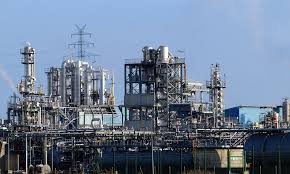Oilfield fittings are an important part of the building blocks that make the oil industry work. With the right fittings you can set up a reliable system that will yield the results you want.
But before even starting to look for local oilfield fitting providers, it is essential to understand more about the industry itself, as well as the different types of pipes and pipe fittings, the materials used, the heat treatment requirements and other important requirements and standards that the industry demands with regards to oilfield machinery.
The Expansion and Competitiveness of the Oil Industry
 The oil industry has become extremely competitive in recent years, as many more players are on the scene than ever before. Also, with access to online courses and reliable providers selling fittings, pipes and all other necessary equipment, setting up the oilfield hardware necessary for a large project and getting all the information and certifications that are needed is no longer a problem.
The oil industry has become extremely competitive in recent years, as many more players are on the scene than ever before. Also, with access to online courses and reliable providers selling fittings, pipes and all other necessary equipment, setting up the oilfield hardware necessary for a large project and getting all the information and certifications that are needed is no longer a problem.
Fortunately, with a greater number of companies and manufacturers engaged in the oil industry, it’s also easier for you to find the right types of oilfield fittings. Buying the right fittings is, therefore, simply a question of gaining access to the right knowledge, understanding the quality requirements for the various valves, gaskets, flanges and pipe fittings you’ll have to install, and locate a manufacturer that can provide you with all the necessary fittings at a fair price.
Buying the Right Fittings for Oilfield Applications
It’s easy to find a company that specializes in oilfield components and ensure that you get the best support for locating the fittings you need. However, it also helps a great deal to know as much as possible about the various types of pipe fittings, such as tees, elbows, reducers or caps, as well as flanges, gaskets and branch connections.
Overall, the following are some of the most essential considerations to keep in mind before buying fittings for oilfield application:
• The materials involved are extremely essential. You need to know how to differentiate between the scope and use of fittings made from stainless steel, metal-carbon steel, alloy steel and non-metal materials such as PVC, HDPE, GRE-GRP etc.
• The manufacturing methods involved with each type of fitting is also essential. Some manufacturing methods can lead to improved durability and resilience, while others may prevent your fittings from performing well under specific circumstances.
• Make sure the manufacturers you are working with are aware of the requirements for inspections and testing that determine the quality level of the fittings they sell. Mechanical, chemical and non-destructive testing are just a few of the most important requirements to take note of.
• Additional requirements you will have to keep an eye out for may also include heat treatment requirements, dimension and markings requirements and keeping track of the codes and standards used in piping.
Most local manufacturers will be able to provide you with all the information mentioned above without much of a problem. However, doing some additional research on your own will also help to a great extent in furthering your knowledge and helping you make a more informed decision.